
Cameron
Table of Contents
Descendant from traditional Japanese Jiu-Jitsu, Brazilian Jiu-Jitsu has become the fastest-growing martial art in the world. Despite this surge in popularity, BJJ is relatively young in comparison to other martial arts such as kung fu, and both Western and Thai boxing styles.
This is in part because Brazilian Jiu Jitsu wasn’t developed by Buddhist monks in ancient temples, creating fighting styles to defend their faith, but by a family of astute business people – the Gracie family, their rivals, and the students who attended their academies.
In this article, we will be looking at how jiu-jitsu evolved and how it went from being used in brutal vale tudo events on the streets of Brazil, to being championed by both celebrities and professional mixed martial arts competitors alike.

The Origins of Brazilian Jiu-jitsu: Tracing its Roots to Japan
The grappling art has a rich history that can be traced back to feudal Japan. The art of ground fighting, or ne-waza, was practiced by Japanese samurai as a means of defending themselves when they were disarmed or knocked to the ground during combat. Over time, these techniques were refined and developed into what is now referred to as Japanese Jiu-jitsu.
For much of the 19th century, Jiu-Jitsu was the dominant martial art in Japan, but in 1882, Jigoro Kano invented Judo. Jigoro Kano believed that jiu-jitsu had become too focused on brute force and should be reformed to focus on the subtleties of techniques. Jigoro’s judo or “gentle way” emphasized the use of leverage over strength and wanted his martial art to promote ethical behavior, mental discipline, and physical fitness beyond the mat. Kano’s style also emphasized “randori”, or free practice which differed from the partner practice which was prevalent at the time.
Premium fight wear for BJJ, MMA, & more. Shop a wide range of premium quality fight wear for mean, women, and kids at affordable prices.
Jigoro sent some of his students around the world to spread the practice of Judo and develop it further. One of these students was Mitsuyo Maeda, who alongside other judokas would travel to the world and demonstrate “Kano Jiu-Jitsu” Maeda became known as Count Koma while demonstrating and competing in challenge matches in Spain, Belgium, and France. He also taught jiu-jitsu d in various South American countries such as Argentina El Salvador, Chile, Costa Rica, Honduras, Ecuador, Colombia, Peru, and Panama.
While on his travels, Maeda learned various catch wrestling and other ground grappling arts that he incorporated into his Kano Jiu-Jitsu practice. These techniques included various throwing techniques, takedowns, transitions, and joint locks. He also learned techniques for controlling and pinning opponents on the ground, as well as ways to escape from various submissions, and holds.
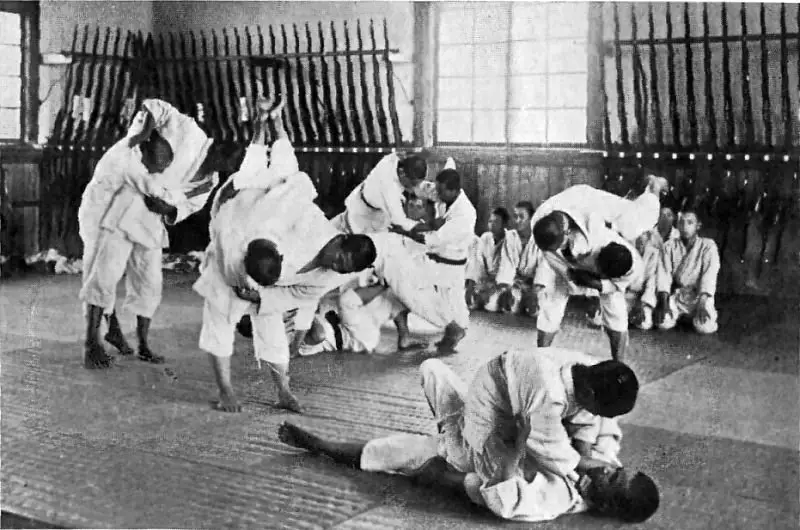
Maeda’s exposure to catch wrestling helped him to develop a more well-rounded grappling game, which he later passed on to his students, including his most famous pupils – the Gracies.
In 1914, Maeda eventually arrived in Brazil and made several trips to the country over the next seven years. During this time, he took on difficult challenges and eventually established his academy in 1921. This move also helped the Brazilian and Japanese governments reach an agreement that allowed Japanese immigrants to reside in Brazil. Overall, Maeda’s efforts proved to be beneficial for both countries and there came to be a large Japanese immigration colony in Brazil over the years which followed.
The Founding of the Gracie Family: The Pioneers of Brazilian Jiu-jitsu
Maeda under his Count Koma moniker would be heavily involved with both challenge matches and professional wrestling and would often tour with traveling circuses.
According to “Martial Arts of the World: An Encyclopedia of History and Innovation”, Maeda showcased his martial arts skills at the De Paz Theatre in Belem where he encountered Gastão Gracie, a business partner of the American Circus. Gastão. Gastão, (also known as George Gracie), who was of Scottish ancestry, was worried about his son Carlos’ lack of discipline, and thus, he sent the 14-year-old Carlos to Mitsuyo’s judo classes. Carlos showed exceptional progress in the classes and eventually made Jiu-Jitsu his lifetime pursuit at the age of 22.
Premium fight wear for BJJ, MMA, & more. Shop a wide range of premium quality fight wear for mean, women, and kids at affordable prices.
In 1925, Carlos established the first Gracie academy in Rio de Janeiro where he trained his younger siblings, George, Gastão Jr., Oswaldo, Helena, Mary, and Helio. Most of these Gracie siblings would become jiu-jitsu masters in their own right, but it would be the youngest brother, Helio who would make the most advancements to developing the art of jiu-jitsu and separate it from Kano’s judo.
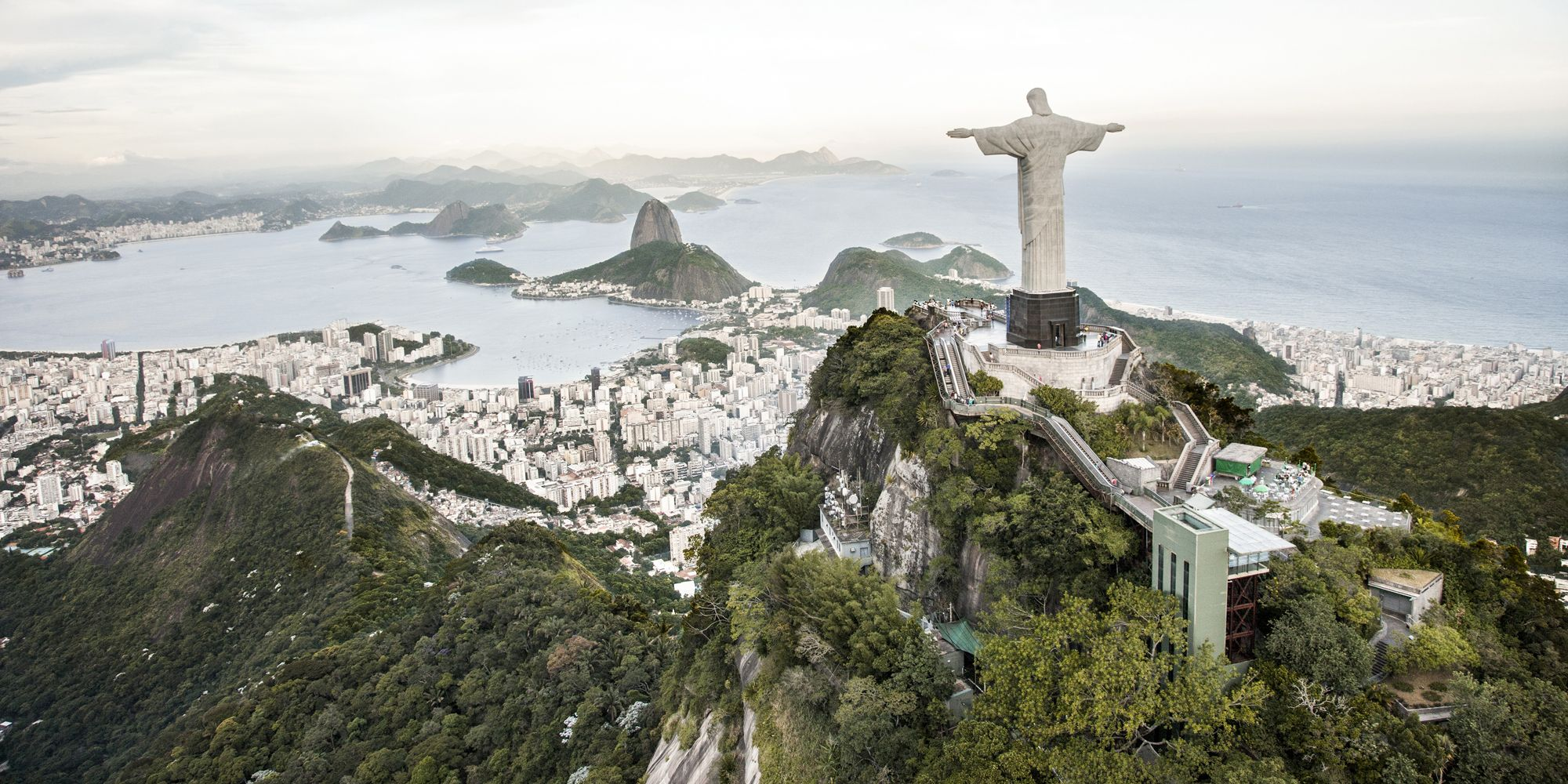
The Early Development of Brazilian Jiu-jitsu in Brazil
Alongside Maeda, some of Kano’s other judokas also traveled to Brazil and had an impact on BJJ’s development. Amongst them was Soshihiro Satake, who began his career as a sumo wrestler before transitioning to judo. Historians and researchers debate whether Satake initially traveled with Maeda to Brazil in the 1900s, or followed him there at a later date but regardless of when Satake had a significant influence on spreading the teaching of ground fighting techniques.
In 1916, Satake opened the first judo academy in Brazil at the Atlético Clube Rio Negro, where he would take Luiz Franca on as a student. Luiz would train with Satake for a year in Manaus before he moved to Belem and began training with Maeda. Later, Franca would take another Kodokan Jiu-Jitsu master as his instructor, Geo Omori. Having assimilated techniques from all three of these practitioners, began teaching Jiu-Jitsu himself. Franca’s most outstanding student was Oswaldo Fadda, a naval marine.
Oswaldo would start his lineage of BJJ and whilst Gracies taught the middle and upper classes, Fadda followed his heart and taught the underprivileged for free. He believed that Jiu-Jitsu could benefit people with physical and mental disabilities, especially those affected by polio in Rio. With no steady source of income, Fadda was compelled to advertise his services in the obituary section of local newspapers. Fadda established his academy in 1950, where he specialized in foot locks, an overlooked technique in the traditional Jiu-Jitsu curriculum.
Premium fight wear for BJJ, MMA, & more. Shop a wide range of premium quality fight wear for mean, women, and kids at affordable prices.
Over the following decades, various challenge matches between Fadda’s students and the Gracies would take place, with Fadda’s students often winning via leg locks.

The Role of Helio Gracie in Refining Brazilian Jiu-jitsu
The Marques de Abrantes school was established in 1925, and at that time, Helio Gracie was still a young boy. Helio was born in Belém in 1913 and was the youngest of Gastao Gracie’s five sons. However, at the age of 12, he was too young to assist with the classes or manage the institution.
Carlos, who was already occupied with managing the family business and teaching, started training Helio in Jiu-Jitsu when he was 16, along with his other brothers, Gastão and Oswaldo. Helio, being frail and prone to fainting spells since childhood, faced difficulties in executing the movements Carlos taught him. Despite these difficulties, Helio developed the foundation of Jiu-Jitsu tactics through trial and error that worked for him. Lacking in athleticism, Helio relied on his timing and leverage to overcome his physical limitations.
Although gaining a mount or side control position is often the most dominant position in Jiu-Jitsu and the most effective way to control an attacker, the Gracies experimented with other positions, such as the trunk position which was rarely used in judo. The Gracies’ study of the trunk or dō-same position proved to be fruitful and eventually evolved into the guard position, which enabled them to outmaneuver martial arts practitioners from other disciplines.
Premium fight wear for BJJ, MMA, & more. Shop a wide range of premium quality fight wear for mean, women, and kids at affordable prices.
With the guidance of his brother and mentor Carlos, the once sickly Helio surprised everyone by engaging in numerous fights throughout his career. One such fight was a 3-hour 43-minute battle against a former student, Valdemar Santana. This showed his bravery, tenacity, and discipline, which ultimately led to him being regarded as a national hero.
As Carlos showed more interest in health and spirituality, Helio took over the management of the Gracie business and became highly dedicated to running the Gracie School, which had grown larger in downtown Rio de Janeiro. With his unwavering commitment, Helio played an instrumental role in expanding the popularity of Jiu-Jitsu in Brazil in the early 1900s.
Along with his three brothers, he helped produce the first Gracie champions. Masahiko Kimura, one of Helio’s toughest opponents, acknowledged that Helio had a sixth-degree black belt in judo, highlighting his martial arts expertise.
Helio trained numerous students during his lifetime, and a significant number of them went on to achieve black belts and establish their own BJJ training centers. Some of the notable names among his students include Rickon, Robin, Rolker, Rolls, Royce, Ryron, Rener, and Rorion Gracie, Pedro Valente, Pedro Castro, Carlos Elias, Flavio Behring, and Armando Wridt Sr.
The Spread of Brazilian Jiu-jitsu Beyond Brazil
As BJJ spread in Brazil, it would also spread outside of it. One of the key factors in this spread was the establishment of BJJ schools and academies in other countries. Perhaps the first Gracies to open academies outside of the US were Carley Gracie, Rolls Gracie, and Rorion.
Rorion traveled to New York by plane just to experience a plane ride. He quickly fell in love with the US and decided to extend his stay by an additional six months. He attended ao a judo club at the YMCA he was staying at and after attending the class a white belt, left as a brown belt. He made friends with the instructor, who helped Rorion get a job at a fast food establishment, White Castle, where he worked for a year, after which he went to Hawaii and then back to Rio. Although he was happy to be home, Rorion decided to go back to the US to introduce Brazilian Jiu-Jitsu to his family. He spent the 1970s saving money and studying law, and by 1978 he was prepared to return to California.
Premium fight wear for BJJ, MMA, & more. Shop a wide range of premium quality fight wear for mean, women, and kids at affordable prices.
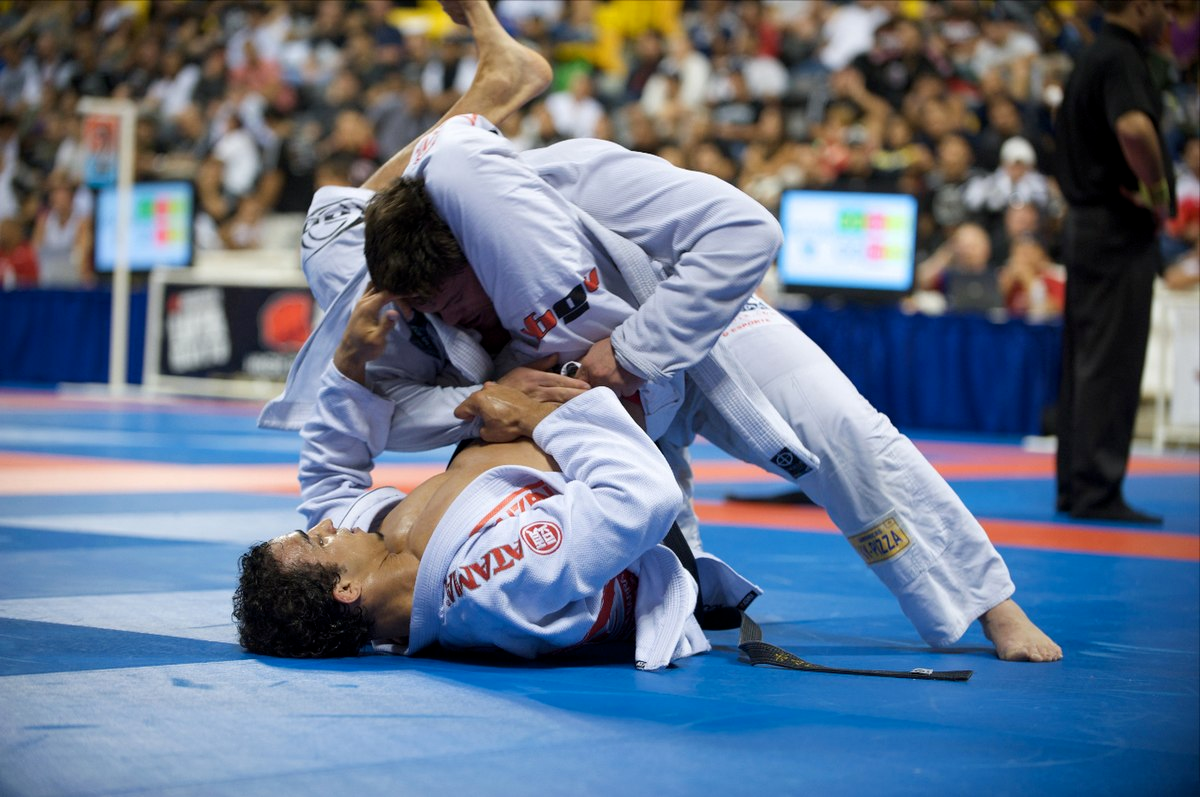
The spread of Brazilian Jiu-Jitsu (BJJ) was facilitated by practitioners who taught the art to students in other countries while competing internationally. These practitioners, often students of the Gracie family or other early pioneers of BJJ, established martial arts schools and training centers in the process. The growth of international BJJ competitions also contributed to its popularity, providing a platform for practitioners to showcase their skills.
One such organization is the International Brazilian Jiu-Jitsu Federation (IBJJF), founded in 1994, which hosts major competitions in multiple countries throughout the year. Moreover, the establishment of BJJ as a competitive sport helped to increase interest in the art worldwide, as competitions gained more visibility and recognition.
Brazilian Jiu-jitsu’s Influence on Mixed Martial Arts (MMA)
Brazilian Jiu-jitsu (BJJ) has had a significant impact on mixed martial arts (MMA), particularly in the early days of the sport. Before the emergence of MMA in the 1990s, most martial arts were practiced in isolation, with practitioners of different styles rarely interacting or competing against each other.
The first major exposure of BJJ to a wider audience was through the UFC (Ultimate Fighting Championship), which was founded in 1993. The first UFC events were marketed as a “no holds barred” competition, where martial artists of different fighting styles would face each other with minimal rules. The Gracie family, who was already well-known in the martial arts world, were instrumental in promoting BJJ in the early UFC events and were used to fighting martial artists of other fighting styles.
The success of BJJ practitioners in the early UFC events, particularly Royce Gracie, who showed he could fight effectively regardless of his opponent’s size. Royce won the first two UFC tournaments and helped to establish the effectiveness of grappling and BJJ techniques in MMA. As a result, many MMA fighters began to incorporate BJJ into their training, and it became a staple of MMA competition.
Whilst all-time greats such as George St-Pierre, Anderson Silva, Fabricio Werdum, and the Nogueira brothers have all displayed how great BJJ can be within the cage, in the modern era, proponents of Jiu Jitsu in the cage include former Lightweight Champion, Charles “Do Bronx” Oliveira.
BJJ’s influence on MMA can be seen in many aspects of the sport, including the popularity of ground fighting and submissions, as well as the development of “grappling heavy” styles of MMA, such as the Brazilian Top Team and American Top Team.
The rise of MMA and BJJ‘s use within the sport is one of the key reasons BJJ has attained its global success. Almost all successful MMA competitors have BJJ as some part of their training reigeme.
The Emergence of Brazilregime-jitsu as a Competitive Sport
In the early days of BJJ, competitions were rare and informal, consisting primarily of challenge matches between different martial arts schools and individual practitioners. There were also vale tudo matches, an early version of MMA competition that emerged in the 1920s and 1930s. These vale tudo matches often meant that the Gracies had to negate the striking techniques of boxers or the occasional capoeira artist. The sport grew in popularity quickly and with it, the reputation of Jiu-Jitsu practitioners as they dominated their opponents on the ground.
However, as the Gracies began to spread and the art they practiced grew in popularity, more formal competitions began to emerge, and BJJ became increasingly recognized as a legitimate sport in its own right.
One of the first formal BJ competitions was held in 1967, when the Jiu-Jitsu Federation of Guanabara organized the first Rio State Jiu-Jitsu Championship. This tournament marked the beginning of a new era in the sport, and it paved the way for a wide range of other competitions that would emerge in the coming years.
In the 1970s and 1980s, BJJ competitions began to become more widespread, with a range of local and regional tournaments springing up throughout Brazil. These events often featured intense rivalries between different schools and individual practitioners, and they helped to establish BJJ as a legitimate competitive sport in its own right.
One important individual in the development was Carlson Gracie. After Helio Gracie’s loss to Valdemar Santana in 1955, Carlson Gracie became the top fighter in the Gracie family. He defeated Santana and established his own Gracie school in Copacabana. Carlson.
Carlson would found his academy in Rio de Janeiro in the 1970s and become known for his intense training methods along with his focus on competition. Carlson’s students began to dominate BJJ competitions in Brazil and beyond, winning numerous titles and establishing a reputation for the art as a highly effective form of combat. Carlson’s academy also played a major role in the development of modern BJJ techniques, expanding on the use of the guard position that Helio and Carlos have worked on, as well as a wide range of submission holds and joint locks.
Premium fight wear for BJJ, MMA, & more. Shop a wide range of premium quality fight wear for mean, women, and kids at affordable prices.

Perhaps more importantly, Carlson’s academy served as a training ground for some of the most influential figures in the history of the sport, including Fabio Gurgel, Murilo Bustamante, and Ricardo Liborio, among others. These prominent figures would go on to found their academies and organizations or compete in MMA events such as Pride FC.
Carlos Gracie Jr. played a major role in promoting and expanding art outside Brazil. He established the International Brazilian Jiu-Jitsu Federation (IBJJF) in 1994, which helped to organize and regulate international BJJ competitions. He also founded the Gracie Barra Academy, which has since become one of the largest and most influential BJJ organizations in the world, with schools in dozens of countries.
Sport BJJ has various rules and restrictions such as a ban on various leg locks and other dangerous techniques which can do permanent damage if not treated with caution.
BJJ tournaments have grown significantly since the early days, with major competitions held worldwide, such as the IBJJF World Championships. The sport’s emphasis on competition motivates practitioners to train harder and improve their skills. The growth of BJJ academies and tournaments worldwide proves the sport’s effectiveness and popularity, with the likelihood of even more schools and competitions emerging in the future.
The Impact of Brazilian Jiu-jitsu on Self-Defense Training
BJJ is a highly effective martial art for self-defense as it emphasizes ground fighting, submission holds, and leverage. Its practical training methods include live sparring and rolling, allowing practitioners to learn to react quickly and adapt to unpredictable situations in real-world scenarios. Whilst it is not always favorable to go to the ground in a real-life altercation, due to the risk of being left virtually defenseless against multiple attackers, a huge amount of street fights still end up there.
BJJ teaches practitioners self-defense from various positions, including on their backs. Practitioners learn to use leverage to control their opponents, even if they are physically smaller. BJJ also emphasizes submission holds that allow practitioners to subdue an attacker without causing harm. By training in chokes, joint locks, and other submission holds, practitioners learn to control an attacker without causing permanent injury or brain damage. This last benefit is one of the reasons various law enforcement agents and military personnel, such as the USMC practice the art.
Programs such as the Gracie Combatives developed by Rener and Rorion Gracie focus on how to negate or counter attacks made by bullies or muggers. Not only can Jiu Jitsu help the user feel more confident and capable walking down the street, but can also help the user develop physical strength and endurance which can protect them in worst-case scenarios.
The growth of Brazilian Jiu-jitsu Academies and Tournaments Worldwide
Brazilian Jiu-jitsu (BJJ) has grown tremendously in popularity over the past few decades, with academies and tournaments now present in countries all around the world. This impressive growth has been driven by the sport’s effectiveness, practicality, and unique culture, which emphasizes respect, discipline, and constant improvement.
In the early days of BJJ, there were only a handful of schools in Brazil, most of which were run by members of the Gracie family, their students, or students of Oswaldo Fadda. Today, there are thousands of academies around the world, with some of the largest and most prestigious located in the United States, Europe, and Asia.
One of the biggest proponents of growth would sport would be Carlos Gracie Jr’s, Gracie Barra. Gracie Barra expanded globally by setting up franchising models. In 2005, they relocated their headquarters from Rio de Janeiro to Lake Forest, California, to open a large gym. Master Carlos established a model school with the help of Black Belt students, which grew from a small warehouse to a 7000 square feet establishment in Irvine, California.
Premium fight wear for BJJ, MMA, & more. Shop a wide range of premium quality fight wear for mean, women, and kids at affordable prices.
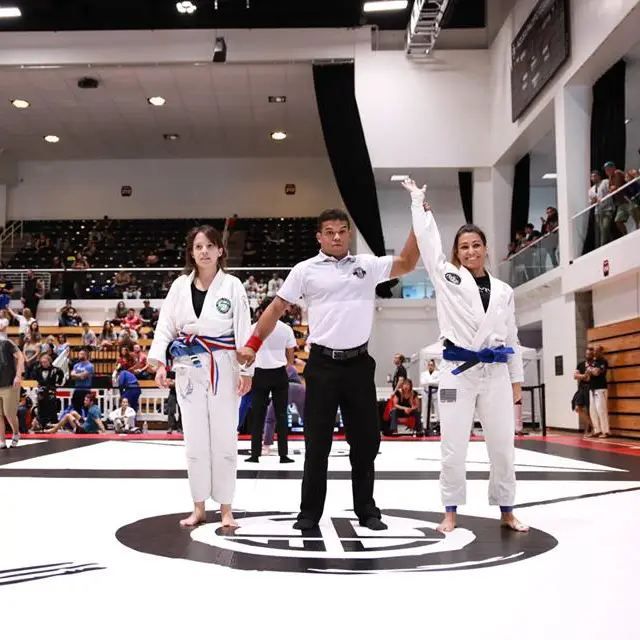
After Gracie Barra America became the main hub of GB, many Jiu-Jitsu masters flocked to the school to learn from Master Carlos and his team. The school’s teaching and administration methods were carefully documented, making it the perfect time to replicate them in multiple locations. Black Belts in surrounding cities opened their schools, with Gracie Barra relying heavily on them to grow their student base.
BJJ academies have grown partly due to the success of the sport in competition and the sense of community within it. BJJ is effective in ground fighting, and early champions opened their schools, spreading the art further. BJJ has a tight-knit culture, and students and instructors form close bonds, creating a demand for supportive and welcoming environments to learn and grow.
The Evolution of Brazilian Jiu-jitsu Techniques Over Time
Brazilian Jiu-jitsu (BJJ) is a constantly evolving martial art that has undergone significant changes and refinements over time. Its techniques have been influenced by the teachings of the founding Gracie family members, as well as other instructors who have contributed to the development of BJJ, particularly over the last two decades.
In the early days of BJJ, the emphasis was on ground fighting, where practitioners would aim to take their opponents to the ground and submit them with chokes, joint locks, and other grappling techniques. However, over time, BJJ evolved to include standing techniques such as takedowns and throws, along with counters to strikes and kicks. This is in part due to various martial arts fighters taking part in “Gracie Challenges”, or “Dojo Storms”, where they would attempt to show their martial arts were more effective than the Jiu Jitsu practiced by the Gracies.
Some of the most significant developments in BJJ techniques over the years include the development of the closed guard, the use of the triangle choke and the armbar, the berimbolo and other modern guard techniques, and the development of leg locks and foot locks as submission techniques. In addition, there has been an increased focus on developing effective defenses against takedowns and striking, as well as on improving the transitional aspects of BJJ, such as the ability to move fluidly between different positions.
In the 1990s and early 2000s. BJJ gained widespread popularity due to the success of its practitioners in the Ultimate Fighting Championship (UFC) and other mixed martial arts (MMA) competitions. This led to a greater emphasis on techniques that were effective in an MMA context, such as guard passing, striking from the ground, and submissions from various positions.
Coaches and instructors such as Eddie Bravo and John Danaher have developed positions rarely used by the Gracies or even the earlier Japanese instructors. Bravo’s focus on an unusual guard known as “rubber guard” allowed him to defeat high-level opponents, whilst the philosophy professor and black belt BJJ coach, Danaher concentrated efforts into a system of leg locks.
Today, BJJ techniques continue to evolve, with teenagers such as the Ruotolo brothers submitting opponents with unconventional “Buggie chokes” in competition. Many high-level BJJ competitors and instructors continue to experiment with new techniques, and these innovations are often shared and adopted by the wider BJJ community.
The Significance of the Belt System in Brazilian Jiu-jitsu
The belt system is an essential aspect of Brazilian Jiu-jitsu (BJJ), providing practitioners with an objective measure of their progress and skill level. In BJJ, the belt system follows a hierarchy of colors, with white being the starting level, followed by blue, purple, brown, and black. The belt system signifies both skill level and experience, with each belt representing a new level of proficiency in the art.
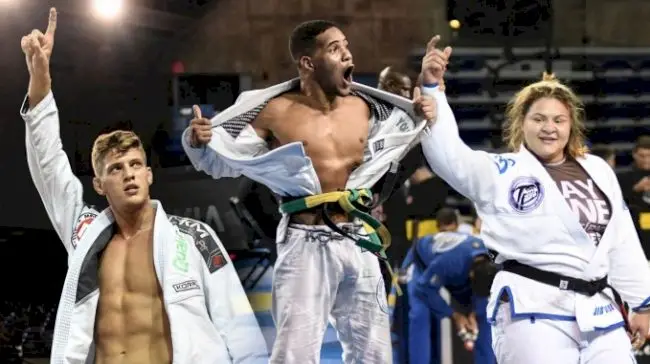
BJJ’s belt system was introduced by Carlos Gracie and is based on technical knowledge, physical ability, and time spent training. Progression through the belts varies widely, with some earning a black belt in five years and others taking over a decade. The system serves as motivation for practitioners and establishes a sense of community and membership.
Although some critics claim that the belt system in BJJ creates an unhealthy competitive mindset, others believe it is necessary to maintain standards and legitimacy. Despite the controversy, it remains an integral part of BJJ’s development and growth.
Famous Brazilian Jiu-jitsu Practitioners and Their Contributions to the Sport
Brazilian Jiu-jitsu has produced many legendary practitioners who have made huge contributions. Whilst Carlos Gracie Sr. and Helio were amongst the progenitors of the art growth, their descendants, such as Carlos Jr, Rolls, Rorion, Rickson Gracie, Royce, and Roger also helped to spread the sport, in part due to displaying its effectiveness.
As mentioned previously, Carlos Jr. helped develop an organized BJJ competition, but he did so after the tragic death of his brother Rolls, who opened his school in New York in the 1970s. Rorion also moved to the States and began teaching in California, establishing an academy in Torrance that would become one of the most well-known BJJ schools in the world. Rorion also was one of the business partners involved with founding the first Ultimate Fighting Championship.

Royce was the winner of the inaugural UFC tournament and a true pioneer of mixed martial arts. Royce was selected to compete as he was the youngest of his brothers and by showcasing BJJ to a global audience by defeating larger foes. His brother Rickson Gracie is believed by many to be the greatest Gracie Jiu-jitsu practitioner of all time. Rickson is undefeated in over 400 professional fights and has been a driving force in the sport’s popularity.
Renzo, like Rorion and Rolls, also opened academies outside of Brazil. He and other Gracie students, such as Jean Jacques and Rigan Machado play a massive part in the global spread of BJJ.
There are some big names within BJJ itself, such as Marcelo Garcia, Andre Galvao, and Roger Gracie. Marcelo, a five-time world champion and one of the greatest grapplers of all time is known for his exceptional guard and his ability to submit opponents from any position. Andre is a multiple-time world champion and one of the most accomplished competitors in Brazilian Jiu-jitsu history. Andre is also the founder of the Atos Jiu-jitsu Academy, which is one of the most successful teams in the sport. Whilst Roger is a 10-time world champion and one of the most dominant Brazilian Jiu-jitsu practitioners in history. Roger is known for his exceptional technique and his ability to submit opponents with his powerful chokes.
Over the last decade or so, the various members of John Danaher’s now-defunct “Death Squad” appeared to dominate no-gi grappling competitions and made names online promoting instructional videos on YouTube or their websites. Amongst the squad were big names like Gordon and Nicky Ryan, Craig Jones, and Oliver Taza. At times these figures have been controversial due to expressing questionable opinions, or even confessing to the use of performance-enhancing drugs.
MMA fighters who have achieved success through the use of BJJ include Charles Oliveira who has more submissions than any other fighter in the UFC, as well as Ronaldo “Jacare” Souza, Damien Brown, Mackenzie Dern, Demian Maia, and former heavyweight champions, Frank Mir, Antonio “Minotauro” Nogueira, and Fabricio Werdum.
Actors and celebrities such as Tom Hardy, Keanu Reeves, Mark Zuckerberg, Ed O’Neill, and Kevin James are also known to be students of the art. Arguably one of the biggest “missionaries” of the sport would be podcaster, stand-up comedian, and UFC commentatstand-up Rogan. Rogan’s podcast is one of the most listened-to podcasts in the world and Jiu-Jitsu and its efficacy often come up in chats with guests.
Another name worth mentioning is Gabi Garcia: A multiple-time world champion and one of the most dominant female Brazilian Jiu-jitsu practitioners in history. Gabi is known for her exceptional size and strength, as well as her exceptional technique.
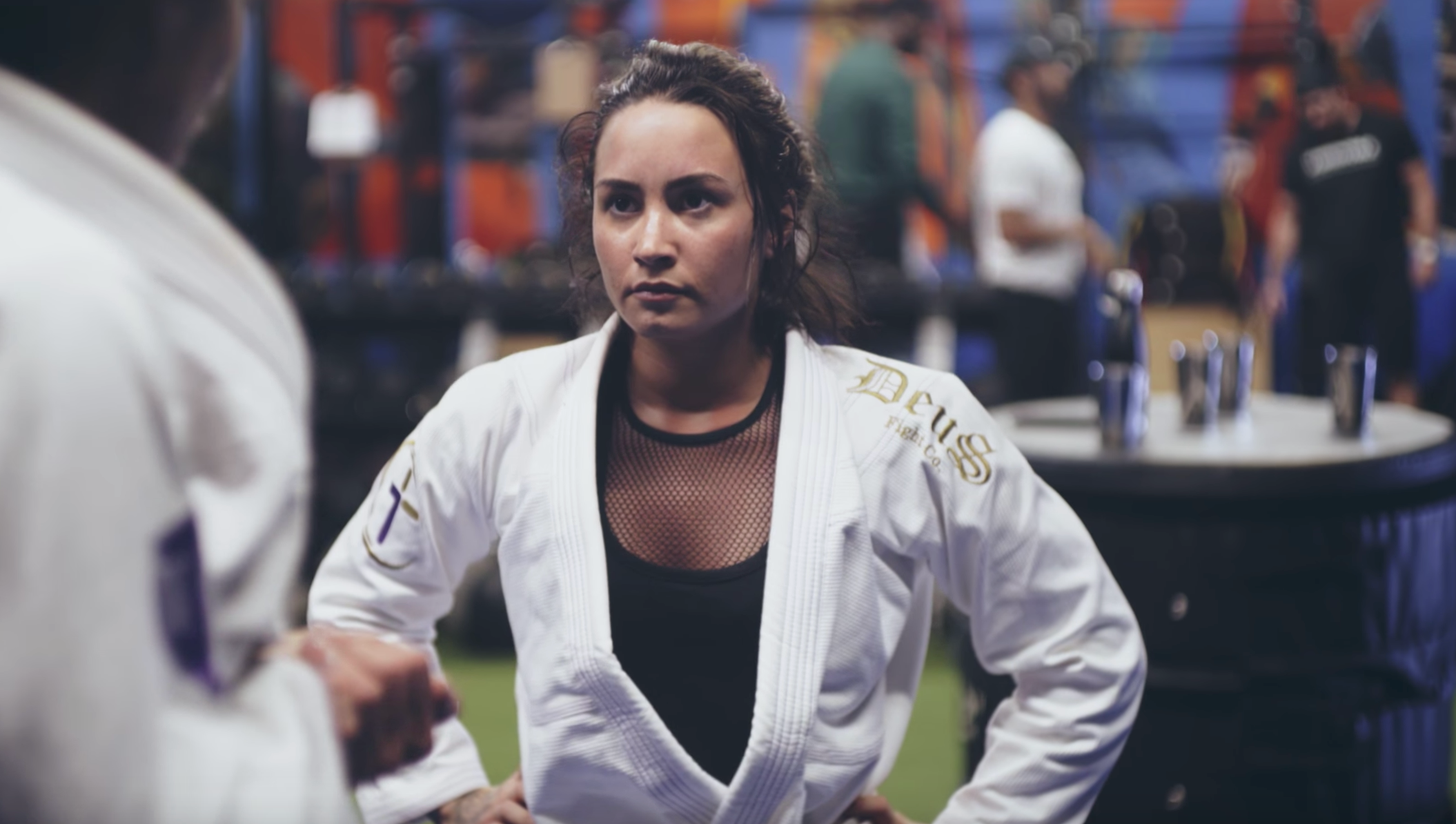
The Role of Women in Brazilian Jiu-jitsu
Women have played a significant role in the development and growth of Brazilian Jiu-Jitsu. In the early days of BJJ, the mats were dominated by men, however as the sport grew, global equal rights movements developed and attitudes of what women were c, capable of doing, more women began to get more involved.
Today, there are many highly skilled female BJJ practitioners, both as competitors and instructors, with some gyms even having classes specifically for women’s self defence. As with men’s MMA, female defenseioners have also become successful MMA fighters, using their BJJ skills to dominate opponents on the ground.
Some notable female BJJ practitioners include:
-
Kyra Gracie: One of the most successful female BJJ competitors of all time, Kyra Gracie is a multiple-time world champion and member of the famous Gracie family.
-
Michelle Nicolini: Another highly decorated BJJ competitor, Michelle Nicolini is a multiple-time world champion and has also had success in MMA.
-
Mackenzie Dern: A black belt under her father Wellington “Megaton” Dias, Mackenzie Dern has become one of the world’s most popular female BJJ practitioners. She has won multiple world championships and is also a successful MMA fighter.
-
Leticia Ribeiro: A black belt under Royler Gracie, Leticia Ribeiro is a multiple-time world champion and one of the most respected female BJJ instructors in the world.
-
Beatriz Mesquita: A multiple-time world champion and ADCC champion, Beatriz Mesquita is one of the most successful female BJJ competitors of her generation.
As more and more women become involved in BJJ, the sport is continuing to grow and evolve. Women’s BJJ is no longer seen as a novelty but as an integral part of the sport. With more opportunities for women to compete and train, the future looks bright for female BJJ practitioners.
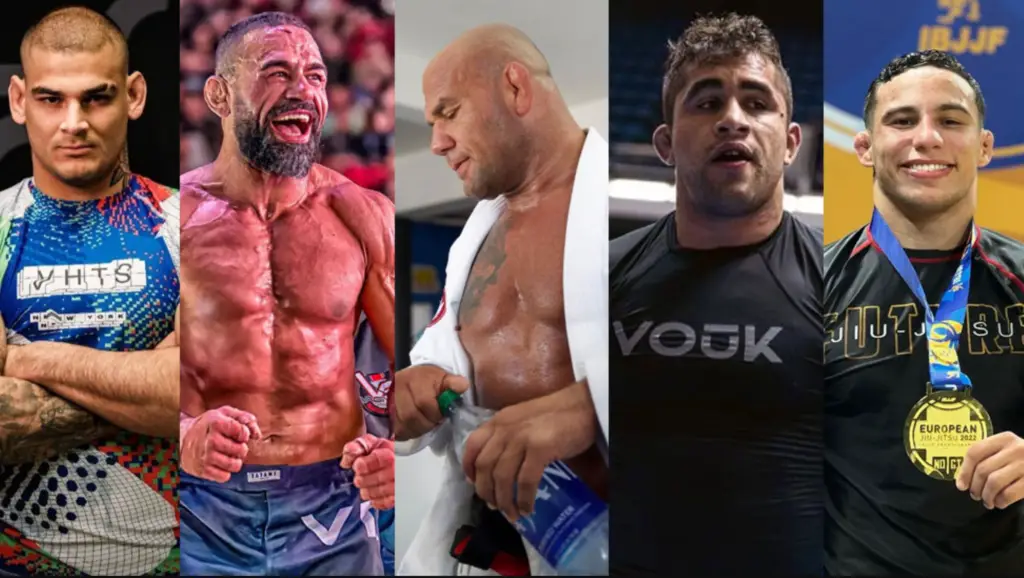
The controversies and challenges facing Brazilian Jiu-jitsu today
As Jiu-Jitsu continues to grow in popularity, it faces some controversies and challenges, which students and teachers should be aware of.
Some of the most prominent ones are:
-
The commercialization of the sport: With the growth of BJJ academies and tournaments worldwide, the art faces a concern that has seen the decline of various other martial arts over the years. There is a fear that it is becoming too commercialized, and the focus is shifting from the values of martial art to making profits. This may lead to the art being watered down, losing a lot of its efficacy.
-
Steroid use: As with many combat sports, steroid use is a concern in BJJ. Some athletes have been caught using performance-enhancing drugs, whilst Gordon Ryan, who many have dubbed the best grappler on the planet has gone as far as to admit the use of PEDs. The use of these supplements not only undermines the integrity of the sport but also poses a health risk to other competitors.
-
Belt promotions: There is some controversy surrounding the belt promotion system, with some critics arguing that it is too subjective and can be influenced by factors like favoritism and politics. There is no standardized curriculum or grading system in BJJ, which can make it difficult for practitioners to measure their progress and compare their skills with others.
-
Safety concerns: As BJJ involves ground fighting and submissions, there is always a risk of injury, especially for beginners who are not familiar with the techniques. With BJJ practicing the art with often ambitious MMA fighters or wrestlers, it seems that BJJ can stray from gentle art. Additionally, coaches should be careful not to teach students attacks such as heel hooks prematurely.
-
Lack of diversity: BJJ has traditionally been a male-dominated sport, and there is still a lack of diversity in terms of gender and ethnicity in many BJJ academies and competitions. Sexism may still be a major problem in the BJJ community. This negatively impacts women who practice or wish to start practicing BJJ, as well as the entire BJJ community, including men. Women often face an unwelcoming training environment, sexual harassment from teammates, and discrimination in professional settings as trainers and competitors. In some cases, gyms may not even have changing rooms for women, which sends a clear message that they are not welcome.
Metamoris, a prominent event organizer in the BJJ community, has been criticized for its lack of female matches, although other organizers treat women with more respect.
Some gi companies use half-naked women to promote their products, and some women and their promoters market women in a way that blurs the lines between them as professional BJJ practitioners and sexual objects. This kind of promotion may empower the women in the pictures and videos, but it can harm women in the sport by suggesting that objectification is acceptable. On the mats, everyone should be treated as equals regardless of gender, although individual differences in training such as size, strength, injuries, and experience should still be taken into account.
-
Dangerous Myths: Although there is a belief that practicing BJJ can make you a better person due to the personal self-development tools it contains, it is not always the case. While many individuals have benefited from BJJ by improving their physical health, self-confidence, and ability to defend themselves, there are still morally flawed individuals in the sport who have not experienced positive changes. Some people use BJJ as an outlet for their aggression, which can amplify their aggressive tendencies, making them more dangerous to others.
-
Politics and factionalism: As with any martial art, there are different schools of thought and factions within BJJ, and sometimes this can lead to infighting and disputes that can harm the sport’s growth and reputation. On occasion, some schools can have a mentality not dissimilar to cults, where there is an expectation on students not to train BJJ at other gyms and to purchase overpriced uniforms or kits from the gym.
-
Lack of Democratic Governing Body: The IBJJF is a reputable governing body in BJJ, known for arranging competitions and promoting belt rank standards. However, it is a private, for-profit organization owned by Gracie Barra, which can be problematic. It holds considerable power over competition formats, rulesets, and running unaffiliated gyms. Similarly, the Jiu Jitsu Global Federation, founded in 2014 is also dominated by various members of the Gracie family. There is no mechanism in place to ensure the interests of all practitioners. The lack of central governing makes BJJ attractive, allowing for individual and local differences. A central governing body with strict rules could lead to gym closures, especially in smaller areas.
Despite these challenges, BJJ continues to grow and evolve, and many practitioners are working to address these issues and ensure the sport’s long-term sustainability.
The Future of Brazilian Jiu-jitsu: Trends and Predictions
For the foreseeable future, BJJ appears set to continue growing, with more and more gyms opening everywhere and students taking the art up. However, it may face some challenges in the form of other grappling arts and some MMA gyms teaching “MMA” as a non-specific set of martial arts techniques. This is particularly because different trends appear to be emerging in the sport of Mixed Martial Arts. In recent years, due to their dominance, Sambo and other wrestling techniques practiced by Khabib Nurgamedov’s Dagestani fighters have gathered a lot of attention. It could be the case that the practice of BJJ falls out of favor due to the success of Sambo’s implementation.
Final Thoughts
BJJ history is a rich tapestry, which could be traced back to Japanese Jiu Jitsu, ju jitsu practiced by the samurai, or even Buddhist monks. Through key figureheads such as Jigoro Kano, the Gracies, and Oswaldo Fadda it has become the fastest-growing martial art in the world. As Jiu Jitsu continues to grow, it will see various challenges, some related to the sport of jiu-jitsu, others related to martial arts schools, and jiu-jitsu academies themselves. Just as Kano chose to teach Maeda values and ethics which he hoped to teach Carlos, Jiu-Jitsu professors should be mindful that they are equipping their pupils with very powerful tools.

